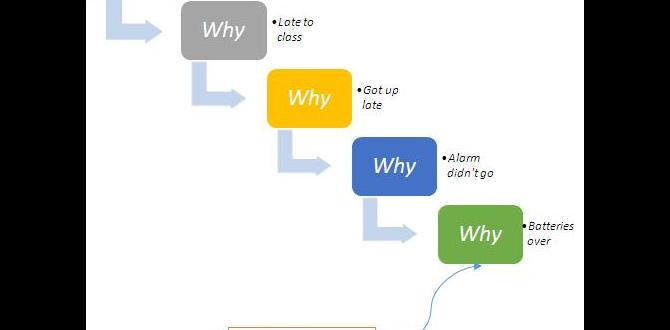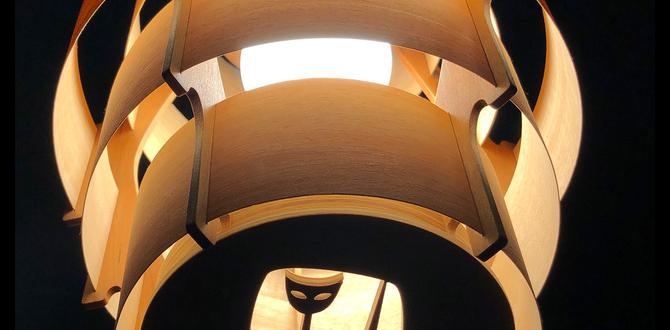Why Do Ships Float On Water And Coins Sink Explanation

Why Do Ships Float on Water and Coins Sink?
Have you ever wondered why big ships float while small coins sink? It all comes down to buoyancy. Ships are designed with large hulls that displace a lot of water. This creates an upward force strong enough to keep them afloat. On the other hand, coins are tiny and dense, so they don’t displace enough water to stay on top. Isn’t it fascinating how shape and size can change what floats and sinks?Understanding Buoyancy
Definition of buoyancy. Archimedes’ principle and its importance.Buoyancy is the force that helps objects float or sink in water. It depends on the object’s weight and the water it displaces. Archimedes’ principle tells us that an object will float if it pushes away more water than its weight. This principle is crucial in ship design, making it possible for huge vessels to stay above water while small coins sink quickly.
What is buoyancy?
Buoyancy is the upward force on an object placed in fluid, allowing it to float or rise.
Key Points of Archimedes’ Principle:
- An object will float if it displaces more water than its weight.
- Heavy ships float due to their shape and size.
- Small, dense coins sink because they displace less water than their weight.
The Science of Density
Definition of density and its formula. Comparison of the density of ships and water.Density is how heavy something is for its size. It tells us if an object will float or sink. The formula for density is Density = Mass/Volume. This means we divide weight by space taken. Ships are designed to be less dense than water. While a coin is small and dense, ships push away enough water to stay on top.
Why do ships float while coins sink?
The key reason is density. Ships are less dense than water, allowing them to float. On the other hand, coins are more dense, which makes them sink.
- Density of water: 1 gram/cm³
- Density of a typical ship: less than 1 gram/cm³
- Density of a coin: more than 1 gram/cm³
Ship Design: Hull Shape and Volume
How hull shape influences buoyancy. Importance of volume in determining floating ability.The shape of a ship’s hull is important for floating. A curved hull helps water push up more. This is called buoyancy. Ships have wide hulls, creating more volume. More volume means more water is displaced, which helps the ship stay afloat. On the other hand, flat or narrow shapes may not float well.
How does hull shape affect buoyancy?
The hull’s shape affects how much water is pushed away. A better shape can help the ship float.
Key Points
- Curved hulls create better buoyancy.
- Wider hulls displace more water.
- Volume helps determine floating ability.
The Role of Weight Distribution
Center of gravity in ships vs. coins. Impact of weight distribution on stability.Weight distribution is key for how objects float or sink. Ships have a low center of gravity. This keeps them steady on water. Coins, however, have all their weight in one spot. This makes them sink easily. A ship spreads its weight across a large area. This helps it stay afloat. In contrast, a coin can’t do that. It simply falls to the bottom.
Why do ships float and coins sink?
Ships float because of their shape and weight distribution. Coins sink due to their compact weight and small size.Key Points:
- Ships have a strong hull that spreads weight.
- Coins have weight concentrated in one point.
- Stable objects like ships resist tipping.
Material Differences: Ships vs. Coins
Common materials used in ships. Comparison of density between metal coins and ship materials.Ships are made from various materials, mainly metal and plastic. Common materials used in ships include:
- Steel
- Aluminum
- Fiberglass
Why do ships float while coins sink?
Ships float because they are built to displace water, making them less dense overall. Coins sink because they are denser than water.
Surface Area and Displacement
Explanation of water displacement principle. How surface area affects floating and sinking.Ever seen a ship glide smoothly on water? This magic happens because of displacement. When a ship enters the water, it pushes some of the water out of the way. The amount of water pushed away equals the weight of the ship. That’s why it floats! Coins, however, have tiny surface areas and sink like they owe rent. They can’t push enough water away to stay afloat! Let’s break it down:
| Object | Surface Area | Displacement |
|---|---|---|
| Ship | Large | High |
| Coin | Small | Low |
So, next time you drop a coin, remember, it’s just a little lazy swimmer!
Practical Examples and Experiments
Simple experiments to demonstrate buoyancy. Reallife applications of buoyancy in engineering.Learning about buoyancy is fun and easy! You can try simple experiments at home. For example:
- Fill a bowl with water.
- Drop different objects, like a coin and a small toy boat.
- Observe what sinks and what floats!
In real life, engineers use buoyancy when designing boats and submarines. They ensure these objects are shaped to float well. This helps them travel safely on water. Buoyancy is important for many things we use daily.
Why do some things float while others sink?
Things float if they weigh less than the water they push away. Objects sink if they weigh more.
Common Misconceptions
Myths about floating and sinking. Clarifying misunderstandings regarding buoyancy and density.Many people believe that size matters when it comes to floating and sinking. A common myth is that heavy things always sink and light things float. However, this is not true. Buoyancy depends on the shape and the density of an object, not just its weight. Another misconception is that large ships can’t float because they are heavy. In reality, their shape allows them to displace a lot of water. This is how they stay above the surface, while a small coin, which is denser, sinks.
What are some common misconceptions about floating and sinking?
Some common misconceptions include:- Heavy objects always sink.
- Shape doesn’t matter in buoyancy.
- All metals sink in water.
Conclusion
In simple terms, ships float because they are designed to displace a lot of water. This helps create buoyancy. Coins, on the other hand, are small and heavy, so they sink. You can try this at home by testing different objects in water. Explore more about buoyancy and see how it works with other things!FAQs
Here Are Five Related Questions On The Topic Of Why Ships Float On Water And Coins Sink:Ships float on water because they are shaped like a big box. This shape helps them push away a lot of water. When they push away more water than their weight, they float. Coins are small and heavy, so they don’t push away much water, and that’s why they sink.
Sure! Just let me know what question you want me to answer.
What Is The Principle Of Buoyancy And How Does It Explain Why Ships Float?Buoyancy is the force that helps objects float in water. When we put a ship in water, it pushes some water out of the way. The weight of that water pushes back up against the ship. If the ship’s weight is less than the water it pushes aside, it floats! So, ships float because buoyancy is stronger than their weight.
How Does The Shape And Design Of A Ship Affect Its Ability To Float On Water?The shape and design of a ship help it float better on water. A wide and flat bottom pushes more water aside. This makes it easier for the ship to stay on top instead of sinking. Also, lighter materials can be used to make the ship float more easily. When we build a ship with good shape, it can carry heavy loads without going under the water.
Why Do Coins, Despite Being Small And Made Of Metal, Sink In Water?Coins sink in water because they are heavy for their size. They are made of metal, which is denser than water. When you drop a coin in water, it pushes the water away but can’t float. Instead, the coin falls to the bottom because it is heavier than the water around it.
How Does The Density Of Objects Play A Role In Determining Whether They Float Or Sink?The density of an object helps decide if it will float or sink. Density is how much something weighs compared to its size. If an object is less dense than water, it will float. If it’s more dense, it will sink. For example, a rock sinks because it’s denser than water, but a piece of wood floats.
Can You Give Examples Of Other Objects That Float Or Sink, And Explain The Reasons Behind Their Behavior In Water?Sure! A rubber duck floats because it’s light and has air inside. A rock sinks because it’s heavy and packed tight. A piece of wood can float since it’s not very heavy for its size. We see these behaviors because of weight and shape. If something weighs less than the water it moves aside, it floats!








